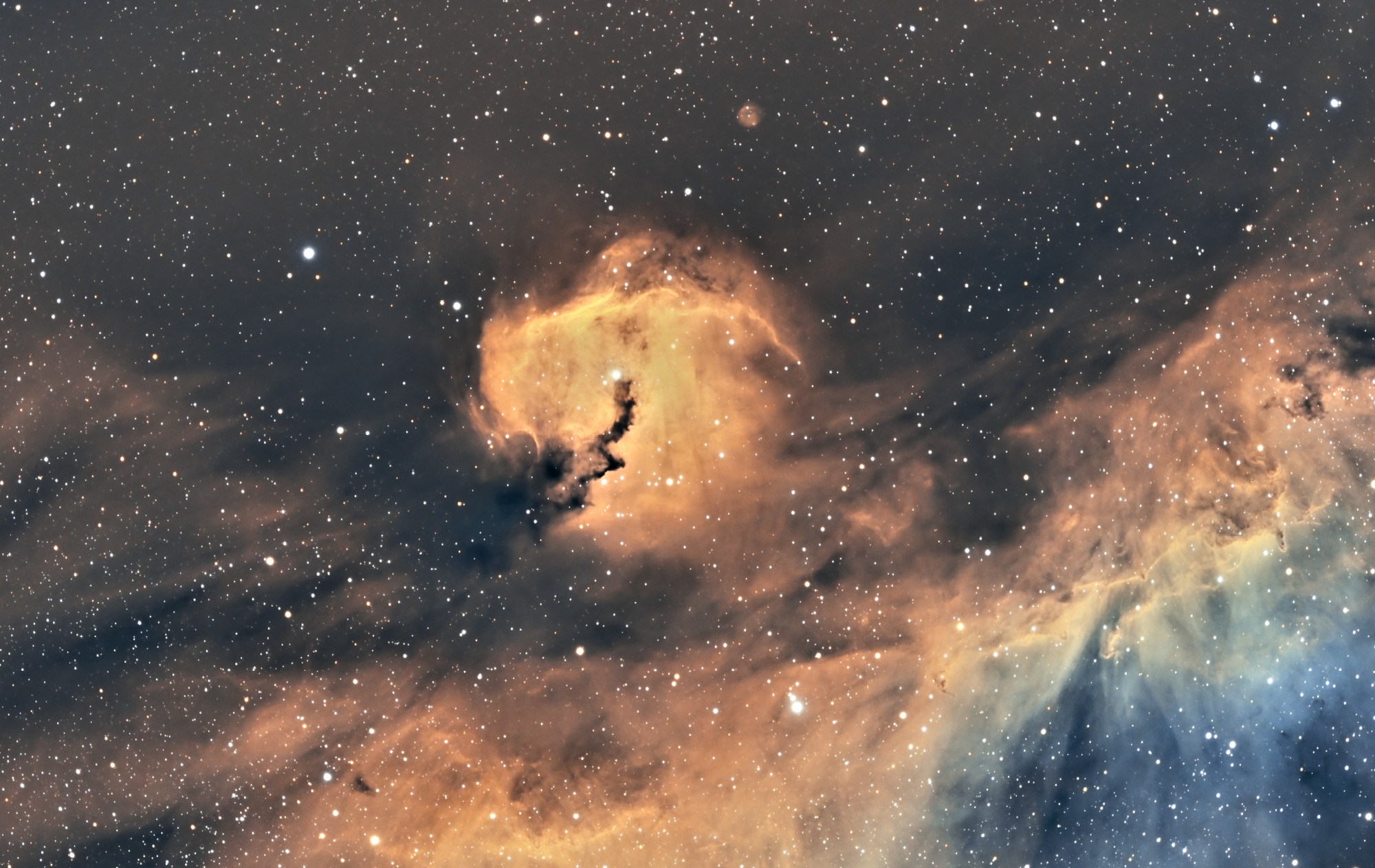The Horsehead Nebula
Object: Barnard 33, IC434, The Horsehead Nebula
Description: One of the most identifiable nebulae in the sky, the Horsehead Nebula in Orion, is part of a large, dark, molecular cloud. Also known as Barnard 33, the unusual shape was first discovered on a photographic plate in the late 1800s. The red glow originates from hydrogen gas predominantly behind the nebula, ionized by the nearby bright star Sigma Orionis. The darkness of the Horsehead is caused mostly by thick dust, although the lower part of the Horsehead’s neck casts a shadow to the left. Streams of gas leaving the nebula are funneled by a strong magnetic field. Bright spots in the Horsehead Nebula’s base are young stars just in the process of forming. Light takes about 1,500 years to reach us from the Horsehead Nebula.
TECH SPECS
Rights Statement: Copyright, Julio Encarnacion, 2022.
Acquisition Dates: February 2nd and 3rd, 2022
Date Published: March 14, 2022
Location: Driveway, Land o Lakes, Florida
Optics: Sky-Watcher Evostar 120ED
Mount: Sky-Watcher EQ6-R Pro
Camera: ZWO ASI-2600MM Pro (mono)
Filters: Astrodon Ha (5nm), Chroma LRGB
Guiding: ZWO ASI120MM Mini (mono)
Gain: 120 for narrowband, 100 for broadband
Cooling: -14F
Integration: Total: 8 hours and 11 minutes; Ha – 6 hours and 11 minutes; LRGB – 2 hours
Software: Mount Control, Guiding, Polar Alignment, Acquisition: ZWO ASIAIR Pro; Processing: Pixinsight 1.8.9 and Adobe Photoshop









